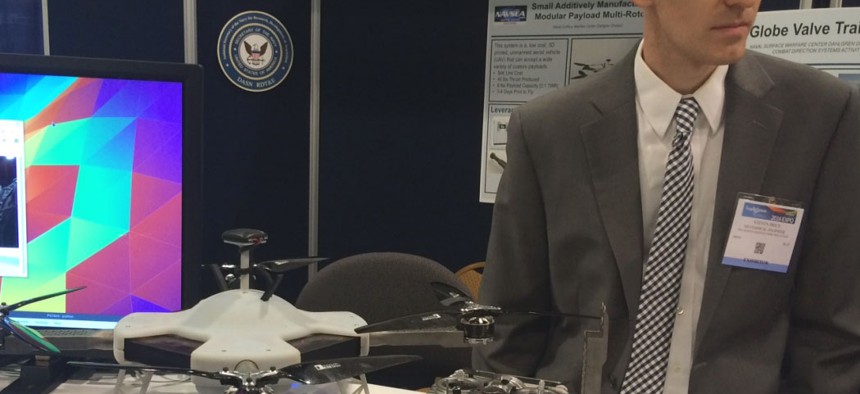How 3D printing can aid the military supply chain
The Naval Surface Warfare Center sees additive manufacturing as a way to deliver "just-in-time" parts, at a much lower cost than current methods.
U.S. government technology agencies such as NASA have been demonstrating new 3D printing capabilities, including a recent "zero-G technology demonstration" aboard the International Space Station.
The Navy also is getting into the act as it seeks to address supply chain issues via the additive manufacturing process that could speed the delivery of parts and equipment to sailors "just in time."
"Additive manufacturing could bring about revolutionary changes to the Navy supply system, with an associated paradigm shift from the current order and stocking system to implementation of just-in-time inventory," Capt. Armen Kurdian, director of engineering and product support for the Navy Supply Command, predicted during a an event hosted by Naval Surface Warfare Center (NSWC) in Dahlgren, Va. "It has the potential to move the point of manufacture for hundreds of components and parts closer to the point of demand."
The service envisions logistics scenarios in which Navy supply officers could special order parts and equipment for "just in time" production using 3D printers. Exhibitors at a recent NSWC event demonstrated rapid prototyping, improved logistics operations and cost reduction capabilities flowing from the Navy's embrace of 3D printing technology.
The Navy also is taking initial steps to use 3D manufacturing technology as a training aid. One initiative developed by NSWC's Dahlgren Division, dubbed Globe Valve Training, used 3D printers to manufacturer a standard one-inch manual valve designed to regulate flow in a pipeline. A 3D printed version of the valve is being used for classroom training at the Norfolk Naval Ship Yard, where sailors can tear apart and reassemble the valve. A standard valve can cost as much as $50,000, Navy procurement officials said, but the 3D training version costs about $500. The valve mock-up is being used to familiarize engineers and mechanics with valve operation and repair procedures.
The Navy acknowledges that key engineering and legal questions must still be resolved before 3D manufacturing technology can be leveraged to streamline its supply chain. Among the engineering issues is determining whether parts made using additive manufacturing match military specifications for standard components. Data rights and intellectual property issues also must be resolved, along with procurement details.
"We will need to develop new contracting strategies to exploit on-demand or even automated IDIQ [indefinite order, indefinite quantity procurements] so that a fleet user could put in a demand signal for a particular component," Kurdian stressed. "An order would be transmitted through the supply system to the most suitable geographic location where it could conceivably get a 3D machine printing that part without any human interaction from the moment the demand signal is sent."




